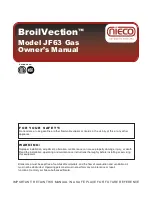
5 Prior to assembly
Supply air/exhaust air in Boiler room
For Austria (according to standard H 5170):
–
For the supply air, 2 cm² per kW thermal output of
the fuel, but allow at least 200 cm² free cross-sec-
tion. (Fuel heat capacity = boiler capacity / effi-
ciency)
–
For the exhaust air, allow at least 180 cm² free
cross-section up to 100 kW nominal heat and an
additional 1 cm² free cross-section for every further
kW.
i
Calculate at least a further 20 % for wire mesh
in the aeration cross-section.
For Germany In accordance with the Model Firing Ordi-
nance:
–
For heating appliances with a nominal output of up
to 35 kW, a combustion air opening of at least 150
cm² or 2 x 75 cm² routed directly into the open air
must be provided.
–
Alternatively, a door/window leading outside and a
room content of at least 4 m³/kW nominal heat out-
put are suitable. If the Boiler room does not abut
onto an outside wall, combustion air supply via
connecting rooms is possible. Here, the com-
bustion air is supplied via a sufficiently dimen-
sioned adjacent room which abuts onto an outside
wall.
–
From
35
to
50
kW,
provide
a
free
aeration
cross-
section
of
at
least
150
cm².
From
50
kW
upwards,
for
aeration
and
ventilation,
provide
a
minimum
free
cross-section
of
150
c
m²
for
each,
plus
2
cm²
per
KW
in
excess
of
50
kW.
i
Calculate at least a further 20 % for wire mesh
in the aeration cross-section.
Boiler
power
[In kW]
Minimum space [in cm²] including 20%
surcharge for grids
Austria
Germany Switzerland
Supply
air
Exhaust
air
Supply
air/Exhaust
air
Supply air
20 kW
>240
>216
>180
>206
25 kW
>180
>258
35 kW
>180
>361
50 kW
>228
>515
70 kW
>228
>721
90 kW
>276
>927
130 kW
>347
>252
>372
>1339
200 kW
>533
>336
>540
>2060
400 kW
>1067
>576
>1020
>4120
5.3 Chimney, flue gas pipe
Chimney cross-section and chimney height
The necessary cross-section depends on the nominal
output of the heating system and the effective chim-
ney height (at least 6.5 m). We recommend that you
have the calculations performed by an expert.
Chimney execution
–
The chimney must be resistant to moisture. Use
fire brick or stainless steel.
–
The chimney must conduct away the flue gases
reliably at all times.
Connect the chimney condensate drain to the
sewage system
–
Connect the condensate drain line of the chimney
to the domestic sewage system (to drain con-
densate, rainwater).
–
Use DN 25 diameter pipe, install siphon.
Provide each boiler with its own chimney
–
The boiler and the fireplace must be coordinated.
This is the only way to ensure the proper func-
tioning of the heating system and the correct
discharge of the flue gases.
–
If there is only one chimney available for two boi-
lers, there is a risk (considering the different ope-
rating states of the boilers - full load/partial load).
This can lead to problems (e.g. the flue gas has too
low energy during the ascent, and does not lift off
sufficiently from the chimney mouth, ...odour pol-
lution by flue gases).
–
Singly equipped chimneys are more reliable and
safer than multi-fuelled fireplaces.
Do not connect a gas boiler and blower boiler to
the same chimney
Do not connect a wood-burning stove and blower
boiler to the same chimney
–
A wood-burning stove typically requires a larger
chimney diameter than the blower boiler.
–
Acoustic disturbance from the blower boiler may
be possible in the living room (by the wood-burning
stove).
–
Unnecessary risk due to gas leakage, e.g. if the
blower boiler is defective.
14
Operation manual
maximus















































